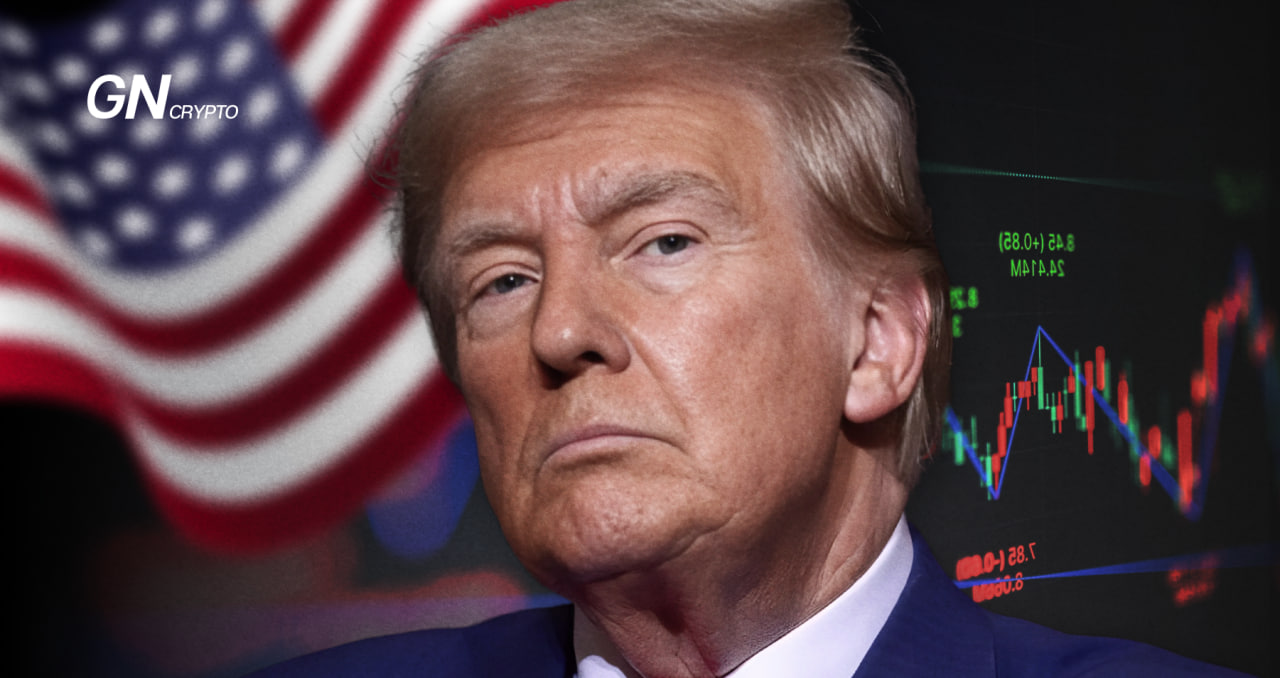Trump’s Impact on the Crypto Market: Expert Opinions

Following Donald Trump’s election victory, the global digital asset market is filled with optimistic expectations for the future, with many financial analysts sharing this sentiment.
On this page
Donald Trump’s return to power has sparked hope among investors and crypto company founders for significant changes in the regulatory approach to digital assets. Traditionally, the Republican Party is known for its pro-business stance and support for free markets. Combined with Trump’s pragmatic business perspective, this sets the stage for potentially easing pressures on the crypto industry and opening up new avenues for growth.
Against this backdrop, Bitcoin has already reached a new all-time high at $81,847.
Euphoria Sweeps the Crypto Market
Coinbase Chief Legal Officer Paul Grewal shared his expectation that the SEC, under new leadership, will significantly reduce lawsuits. He also believes the new chairman will review all existing crypto-related cases filed under Gary Gensler to discern which cases genuinely involved fraud and which did not.
Coinbase CEO Brian Armstrong is similarly optimistic about the evolving opportunities. He anticipates that a Republican-led Congress “will be the most pro-crypto congress ever,” noting that this shift is a major advantage for the industry in terms of compliance and overall security.
Armstrong has emerged as one of the biggest winners from Trump’s rise to power among crypto millionaires, with his wealth growing by over $2.6 billion, and Coinbase stock jumping by 31%.
Read more: Trump’s Victory Boosts Wealth of Leading Crypto Entrepreneurs
Sky (formerly MakerDAO) founder Rune Christensen remarked that Trump’s victory will spark a “proper sustained DeFi Renaissance” and significantly increase the number of DeFi platform users.
Bitfinex representatives stated that “with Donald Trump’s plans for a crypto advisory council and friendlier regulatory approach, the US might finally solidify its position as a global hub for digital assets.”
Meanwhile, Justin Sun even hinted at a possible job offer for Gary Gensler, anticipating that he might soon be without a job.
In short, the market is celebrating, and charts are glowing green, with this surge attributed solely to the “Trump effect.”
What to Expect Next
According to Bernstein Research analysts, Trump’s victory could indeed trigger radical changes in U.S. cryptocurrency regulation. While Democrats have focused on balancing global power dynamics, Republicans seek leadership—a goal unlikely to be achieved without embracing innovative technologies such as blockchain and cryptocurrencies.
A Republican administration is expected to overhaul the SEC and place pro-crypto advocates in key roles. Trump’s backing of areas like DeFi and stablecoins could lead to laws fostering a more supportive regulatory environment for digital assets.
This shift would also create new opportunities for crypto companies. For example, by easing the regulatory burden on stablecoin issuers such as Circle and Paxos, competition could rise against Tether, the current market leader. This could further promote widespread adoption of stablecoins within the U.S.
Moreover, Trump has vested interests in this sector.
Related: World Liberty Financial Set to Release a New Stablecoin
But the most ambitious expectation from the crypto community is Trump’s promise to create a national BTC reserve, potentially accumulating up to 1 million BTC.
According to Bernstein analysts, these drivers could push Bitcoin’s price to $200,000 by the end of 2025.
National Reserves: What They Are
National strategic reserves serve as a financial safety buffer for a country.
These reserves traditionally consist of:
- Gold: A long-standing store of value and a primary reserve component for many nations.
- Foreign currency reserves in partner currencies like the U.S. dollar, euro, Japanese yen, and British pound.
- Government bonds issued by other nations, which earn interest and can be readily liquidated if needed.
- Special Drawing Rights (SDRs): A reserve asset created by the International Monetary Fund (IMF) in 1969, acting as an artificial currency that exists only as account entries within the IMF, without physical coins or bills.
- Other liquid assets: This category includes stocks, deposits in foreign banks, and other quickly accessible assets that can be converted to cash when required.
Additional reserves may also include commodities, biological reserves, and other essential goods.
Bitcoin could potentially be used to modernize and diversify the strategic reserves of the U.S. Source: river.com
In July 2024, Senator Cynthia Lummis introduced the Boosting Innovation, Technology and Competitiveness through Optimized Investment Nationwide (BITCOIN) Act in the Senate, which proposes establishing a decentralized network of secure Bitcoin vaults managed by the U.S. Treasury.
Additionally, the bill suggests the purchase of one million BTC (about 5% of Bitcoin’s total supply), making it comparable to the size of the U.S. gold reserves.
Senator Lummis has also advocated for protecting private investors’ rights to hold BTC and has proposed legislation ensuring that a strategic crypto reserve would not infringe upon individual financial freedoms.
Related: Bit-Knox Bunker: The Cold Storage Fortress Protecting Your Crypto
What If BTC Becomes Part of SDR?
Bitcoin is drawing closer to recognition as a new type of reserve asset. Its official inclusion in national reserves would provide a significant boost to BTC, both in terms of credibility and by limiting the circulating supply.
Such a shift could transform the global financial landscape, dramatically influencing the balance of supply and demand, while solidifying Bitcoin’s role as a trusted store of value.
In the long term, this could reduce cryptocurrency market volatility and encourage holders to keep their assets for extended periods. Additionally, integrating Bitcoin into the reserves of a global powerhouse like the U.S. would likely prompt other countries to consider BTC for their own strategic reserves.
Digital assets, though not all, may emerge as a new global standard for savings, potentially competing with gold and traditional fiat safe-haven currencies. Even a modest allocation of BTC within U.S. national reserves could greatly impact its market capitalization.
The U.S. Exchange Stabilization Fund, long responsible for managing the country's gold and foreign exchange reserves, could be an ideal platform to experiment with incorporating cryptocurrencies.
What’s Next for the FIT21 Act?
On May 22, 2024, the House of Representatives passed the FIT21 bill, aimed at establishing a clear regulatory framework for the crypto industry. The bill categorized digital assets and set foundational guidelines for their oversight. Despite opposition from President Biden and his administration, the bill, previously known as “HR 4763,” gained broad bipartisan support.
FIT21 was initially seen as a breakthrough for the crypto market. Source: Zerocap
When passed six months ago, FIT21 seemed like a landmark win for the crypto industry, offering much-needed regulatory clarity and curbing the SEC’s authority.
Related: What Crypto Issues Will the New U.S. Law Address?
Now, following Donald Trump’s election, the bill appears to have lost relevance. Crypto lobbyists, confident in their strengthened position with a friendly Congress, seem poised to push for even more favorable terms. According to insider sources cited by Decrypt, FIT21 is likely to be withdrawn and replaced with a more transformative proposal as it goes back to the House for consideration.
With a “crypto president” in office, industry leaders are no longer settling for compromises and are ready to push lawmakers for terms that will best support the growth of their businesses.
What Will Happen with Interest Rates?
On November 8, the U.S. Federal Reserve (Fed) announced a new benchmark rate, lowering it by 25 basis points to a range of 4.5–4.75%.
The rate cut was anticipated, but will this easing policy continue?
Donald Trump’s election could potentially spur inflation and push the Fed to reconsider its dovish stance. This shift may be linked to risks of “Chinese trade wars,” possible tariff increases, and the threat of deporting undocumented immigrant workers who provide the economy with affordable labor.
The Fed may face the need to raise rates again. Source: Linkedin
JPMorgan analysts caution that Trump’s victory and his potential expansionary fiscal policies could trigger inflation, which may force the Federal Reserve to halt its plans to lower interest rates further.
In this case, the November rate cut could be the last, as the Fed is typically reluctant to go against market sentiment. If Jerome Powell remains in his role, he might adopt a hawkish stance in 2025, potentially returning to rate hikes.
Some analysts believe that to contain inflation, the central bank may need to raise rates on short-term government bonds by up to 75 basis points. This would likely impact investment sentiment, as it would make government bonds a more attractive option than other financial instruments.
However, such a hike is considered a negative and unlikely scenario, as it would suggest that inflation has risen above 4% (currently at 2.8%).
Related: Trump Fears Ceding Crypto Market Leadership to China
In recent years, the cryptocurrency market has encountered various challenges due to SEC pressure and shaken confidence from institutional investors. As regulatory attitudes become friendlier and conditions improve, there is potential for renewed interest from major financial firms in the crypto market.
The content on The Coinomist is for informational purposes only and should not be interpreted as financial advice. While we strive to provide accurate and up-to-date information, we do not guarantee the accuracy, completeness, or reliability of any content. Neither we accept liability for any errors or omissions in the information provided or for any financial losses incurred as a result of relying on this information. Actions based on this content are at your own risk. Always do your own research and consult a professional. See our Terms, Privacy Policy, and Disclaimers for more details.




























